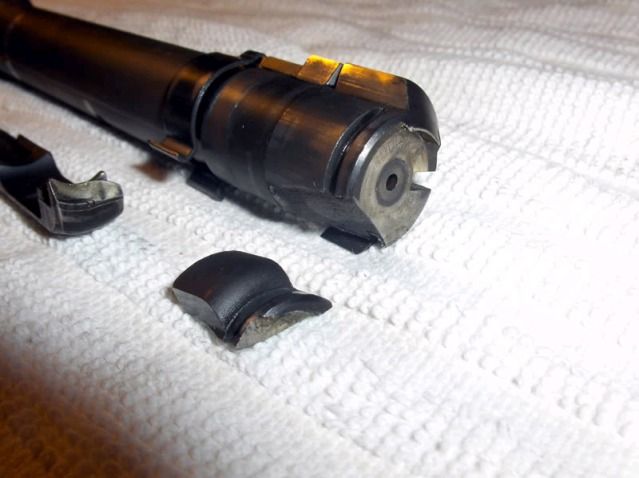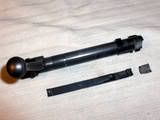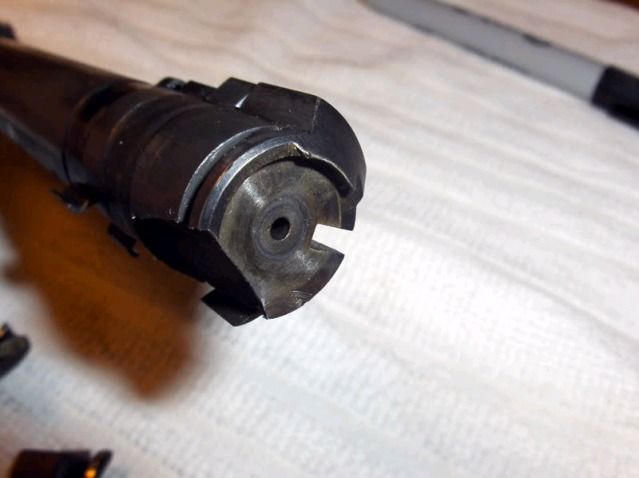I see what he is getting at although it took me a while to get past your logic.
He says that Peter Paul Mauser and Schmidt and Rubin and all those other guys assumed that a crusher gauge calibrated in dead load psi would read out momentary psi. And that they accurately knew the strength of their materials and the mechanics of their designs. Then made their rifles just strong enough for routine use at that load with the usual 33% safety margin of the proof test.
But now we can read momentary pressures more accurately and find them to be at least crowding the limits of the materials and designs. So we should not increase the loads and often should decrease them, which draws cries of lawyerification across the internet.
Which means that any .270 on a Mauser action is an overload; that round having been the highest pressure cartridge in regular use until Mr Weatherby came along.
I think you stated it better than I did. Old military actions were made of materials that varied in material properties because of the imprecision of manufacture. While I am not particularly worried about WW2 era materials, which are still dirtier than today's, steel made around and just after WW1 are not to be trusted. Steels made in the pre vacuum tube era, are the most variable. We know from Dieter's series on the M98 Mauser rifles that the Germans were experiencing lug cracking on new service rifles with ammunition that was spec'd at 43,000 psia. The WW2 stuff was at 46,000 psia.
Then comes the pressure problem. The M98 for example, the lugs would have been sized for 43,000 psia. I believe improvements in metal quality allowed the Germans to bump up the cartridge pressures to 46,000 psi, but everyone at the time thought the maximum load on the locking would be, lets say, 46,000 psi.
Mechanical items are basically designed for a service life and a load. There are a lot more criteria, such as $$, but when it comes to down to it, any firearm designed for an infinite lifetime would weigh too much. You could size the locking mechanism such that it had an infinite fatigue life at the maximum cartridge load, but the rifle would not weigh 8 pounds, it might be 20, or 30 pounds. (Guesses) By the way this true for cannon, a Naval civilian retiree told me that the 5 inch cannons he procured had a lifetime of 2000 rounds. But the lifetime was usually less, because they were not well maintained. I was told by an Army cannon designer that for the 105 mm, the tube, the locking mechanism, the carriage, all were tossed at 15,000 rounds. Maybe the tube is worn out before then, my memory is hazy on this, but the rest of the system has met its service life and no one wants a fatigue fracture which kills the crew.
Incidentally, the Civil War Parrot gun, a cast iron cannon, typically blew up around 300 rounds, killing anyone around the thing when it did so. This caused moral issues with Artillery crews.
So, for old mechanisms, they were designed for a load and a service life and made of uncertain materials. Their previous service life is unknown, so the fatigue life left in the mechanism is unknown. While pressure is pressure, increasing pressures reduce fatigue lifetime even faster. I recommend anyone look at S/N curves and see that as load goes up, fatigue lifetime goes down.
Catastrophic Failure - Swedish Mauser m/1896
http://castboolits.gunloads.com/showthread.php?106437-Catastrophic-Failure-Swedish-Mauser-m-1896
I don't remember if I ever posted these photos in this forum but with the other topic of the Spanish 1916 catastrophic failure
http://castboolits.gunloads.com/showthread.php?t=34549 coming up I thought it might be a good idea to have this as a separate subject.
The difference between the Spanish 1916 failure and this Swedish Mauser is we know exactly what caused the Swede to come apart. It was a double charge of fast pistol powder. The rifle resides in the UK so these photos were obtained for me by another very knowledgeable Swede collector who's USAF duty station is in the UK.
The Mauser m/1896 was taken out of general military service in Sweden some 12-15 years ago due to a bolt lug failure killing a young Swedish soldier. There are some m/94 carbines in use by the Livguard who has duty at the royal palace in Stockholm and their rifles are carried locked and loaded so they are not ceremonial. Swedish Mausers do fail in normal use many times for reasons that are not obvious. I would prefer to urge caution and care when handloading or shooting rifles that are 100+ years old. Metal fatigue is cumulative. If you feel the need to hotrod a Mauser do it with a 98 action.
Sheared Bolt Lugs - Swedish Mauser
http://castboolits.gunloads.com/showthread.php?34532-Sheared-Bolt-Lugs-Swedish-Mauser
m/1896 Swedish Mauser in Australia. Details of failure unknown to me.
Those of you with metallurgical experience are most welcome to comment... though I know its hard to make a definitive statement based on such limited information.
As with the 1893 Mauser photos I post these photos to illuminate the reality that seemingly strong and sound rifles suffer catastrophic failures and sometimes people are killed as a result. What exactly caused this incident, had it killed the shooter, would be immaterial to his widow and children. Dead is dead.
Old guns do experience metal fatigue.
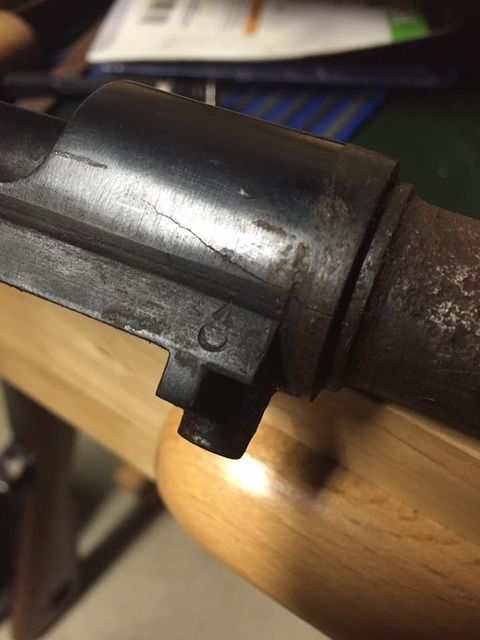
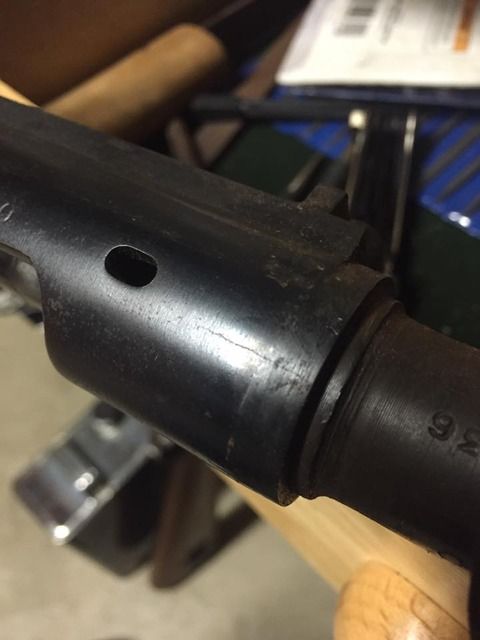
A new action, such as the Savage, is made of modern materials, sized for the largest cartridge, typically a belted magnum. It too has a fatigue life, but I really doubt anyone is going to crack the lugs of a modern Savage 110 before they blow a case head. But, you never know, nothing made by man cannot be unmade by man, and given enough overpressure rounds, anyone can bust a mechanism. These are pictures of a FN SPR in 300 WSSM. Someone managed to crack a lug.
